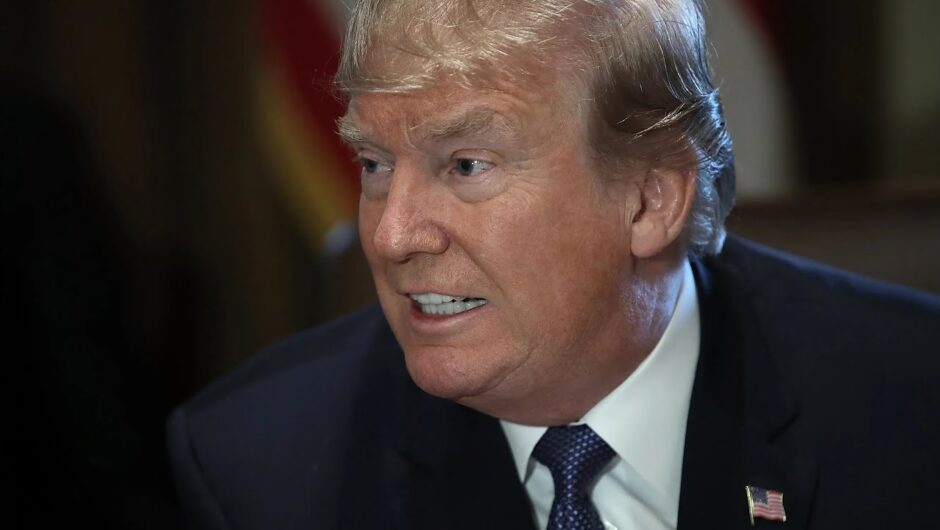The goods trade surplus surged to $9bn in December — the fourth-highest on record and a $7.4bn increase from November — according to preliminary data from the Australian Bureau of Statistics. The goods trade surplus with China alone was $5.2bn.Exports to Australia’s biggest trading partner rose $2.3bn or 21 per cent on the back of record exports of both iron ore and cereals. In total Australia’s exports to China in December jumped to $13.39bn, the most since June and the fifth-highest since July 2019.Imports from China fell 7 per cent or $641m after a spike caused by “lumpy” capital goods.The surging trade figures come as relations between Canberra and Beijing have hit a low, with Australian coal frozen out of some Chinese docks for months, while tariffs of more than 80 per cent have been slapped on Australian barley and timber exports have been stopped. In November Australian wine imports were slugged with 200 per cent tariffs following dumping claims.ABS Head of International Statistics, Katie Hutt, said Australia’s exports showed “steely resolve”.A $4.9bn or 16 per cent increase in December 2020 brought total goods exports to $34.9bn. “The main drivers were increases to metalliferous ores, cereals and coal,” Ms Hutt said.Metalliferous ore exports rose $2.8bn or 22 per cent, and 82 per cent of that was iron ore, which rose $2.2bn or 21 per cent to $12.5bn. The jump in Australia’s biggest commodity export was generated by both price and volume.Spot iron ore averaged about $157 a tonne in December, up 27 per cent month-on-month.The volume of iron ore exported rose about 11 per cent, according to the ABS.At the same time, Australia’s exports of metallurgical or hard coking coal used for steelmaking rose $501m or 38 per cent in the month. On a year-on-year basis, coal exports rose 27 per cent, with thermal coal up 25 per cent and hard coking coal up 54 per cent.“While hard coking coal exports to China have diminished since mid-2020, increased exports to India, Japan and South Korea have offset some of the fall,” Ms Hutt said.Australia’s three largest coal export destinations saw large increases in December, with Japan up $236m or 27 per cent, India up $272m or 38 per cent and South Korea, up $148m or 48 per cent.Wheat and barley drove the jump in cereals exports, with wheat up $604m or 423 per cent and barley up $182m or 254 per cent despite China’s official ban on Australian barley imports.On a year-on-year basis, Australia’s cereals exports to China rose by $241m or 681 per cent.Exports of wheat to China were $250m, after zero exports since August 2020. “This represented one-third of the total wheat exported from Australia in December and 88 per cent of the total cereal exports to China,” the ABS said. It was the largest monthly wheat export on record to any single destination country.Some 42 per cent of December’s barley exports headed for Saudi Arabia.“Strong growing conditions in Australia’s wheat belt and lower than average rainfall in the Black Sea growing region has driven demand for Australian wheat to record highs,” Ms Hutt added.Russia is the world’s largest wheat exporter.“Beijing has been unable or unwilling to wean itself of low-cost, high-quality Australian iron ore,” said Australia-China Relations Institute Director James Laurenceson. “The result is the second-highest total value of Australian goods exports ever, down just 2 per cent on last year’s record high.”Mr Laurenceson said despite a popular view that Chinese decisions were about politics and ideology, “what these numbers show is that basic economic calculations still loom large”. “Even in sectors where China has greater choice in suppliers like barley, coal and copper, Australian producers have by and large been successful in finding alternative markets, even if they don’t offer the price premium China previously did,” he said.In his view the trade numbers will “give Canberra some confidence that its approach of ‘strategic patience’ towards the China relationship is sustainable for the time being”. “From a domestic political perspective, where it could get tricky is if Australia’s share of China’s imports of wine, lobster and so on starts being snapped up by our competitors — including those claiming to stand “shoulder to shoulder” with us — like the US and other Five Eyes or “like-minded” countries.”For Australia, total imports fell $2.5bn or 9 per cent to $26bn in December after a strong rise.The fall in imports was most evident in transport equipment, down $1bn or 74 per cent, and telecommunications and sound equipment, down $511m or 23 per cent, according to the ABS.Offsetting the fall in transport equipment was a $132m or 13 per cent rise in specialised machinery imports and road vehicles imports, which rose $66m or 2 per cent to $3.7bn. “Carrying on the trend through the second half of this year, we continue to see a rise in road-vehicle imports with December recording the highest monthly value, surpassing the previous record set in June 2018,” said Ms Hutt. “Despite the record December, imports for the 2020 calendar year are the lowest since 2015, highlighting the pandemic’s impact on the imports of motor vehicles in early 2020.”ANZ economist Hayden Dimes noted that Australia’s exports to China alone surged by $2.3bn or 21 per cent to $13.39bn — the most since June and the fifth-highest since July 2019. Most of the goods Australia exported were global commodities.
Additional reporting: Glenda Korporaal
Source link
Share Your Covid-19 Story
Over 0 Million people have contracted Covid-19 worldwide.
Tell us how Covid-19 has affected your life
Please share your story with us.
And get a great Free Gift – Click here for more details






